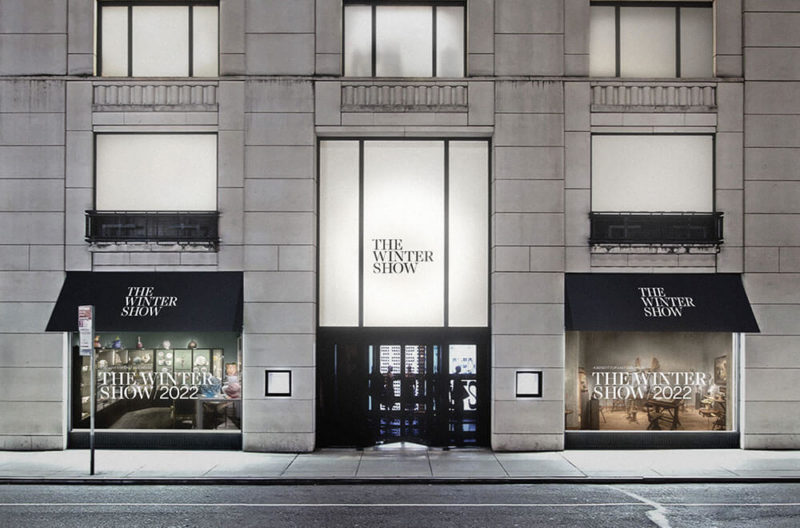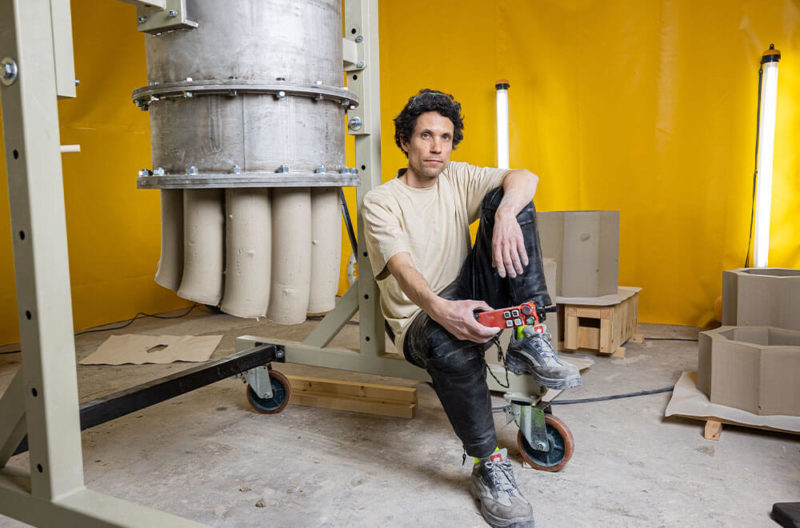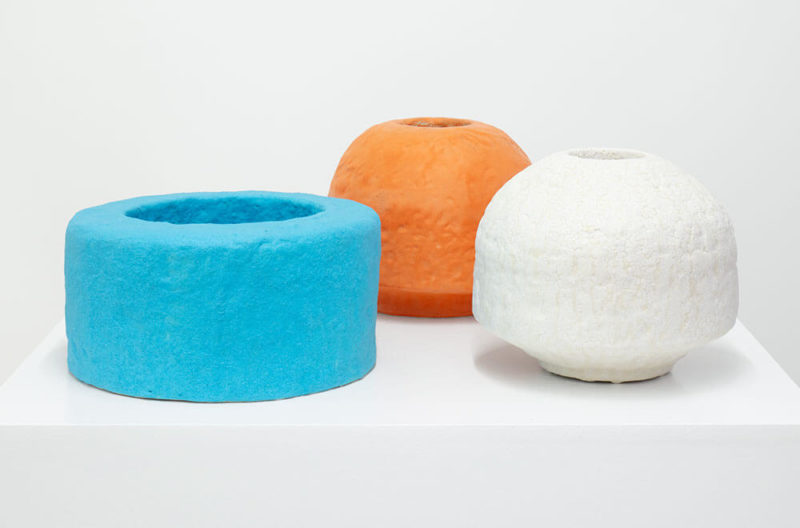miart 2022
Among the highlights – Alessandro Mendini, Gaetano Pesce and Matteo Pellegrino; Andrea Branzi's ‘Grandi Legni’; and work by French duo Daniel Dewar & Grégory Gicquel.

Daniel Dewar & Grégory Gicquel, ‘Oak bench with orange tip butterflies, Flanders poppies and snails’, 2022
COURTESY: Daniel Dewar & Grégory Gicquel & miart
FROM THE 1-3rd of April the Milanese crowd gathered for the 26th edition of its annual art rendez-vous – the miart fair. Galleries from all over Italy, as well as a handful from abroad, presented a selection of modern and contemporary art, both established and emerging. The fair was mostly focused on contemporary art, but as design is closely connected to fine art in Milan, collectors were able to enjoy a selection of collectible and limited-edition pieces.

Angelo Mangiarotti, ‘Pair of large sculptures from the Poiesis collection’, 1988
COURTESY: Eredi Marelli & miart
The iconic Milanese gallery, Luisa Delle Piane, presented a dialogue between three Italian designers: Alessandro Mendini, Gaetano Pesce and Matteo Pellegrino.
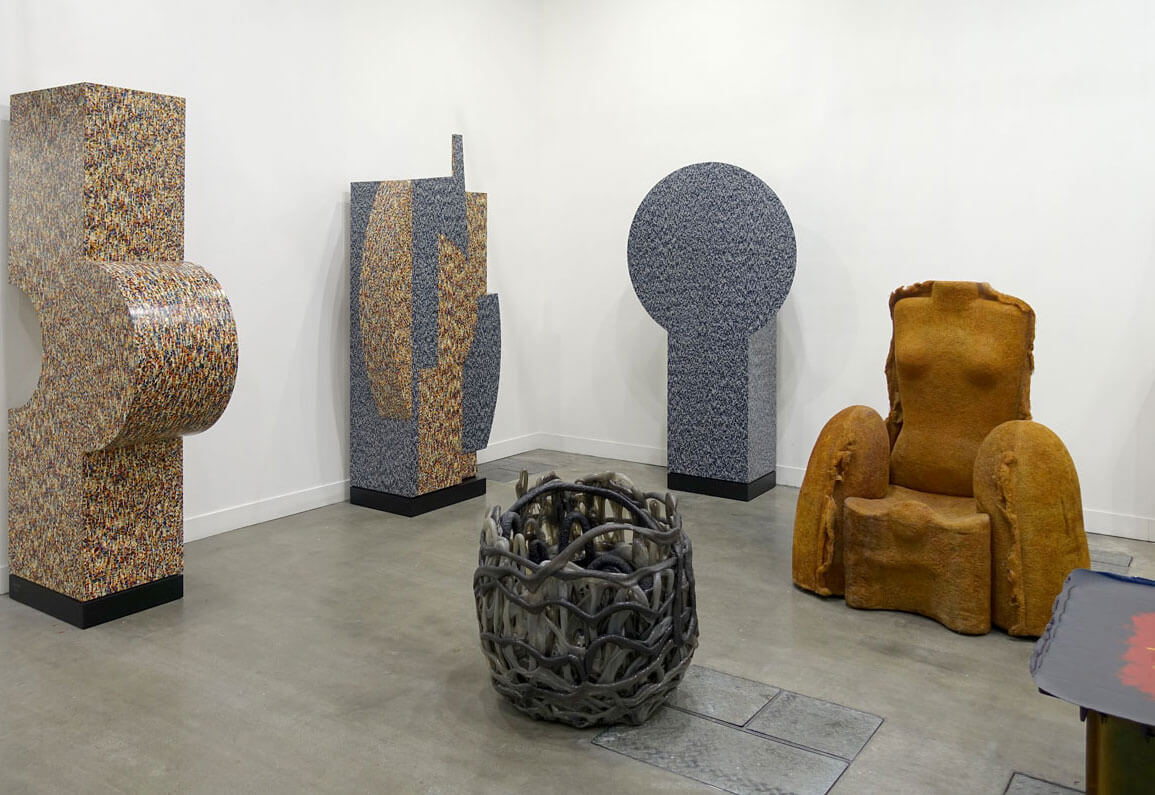
Installation view Luisa della Piane with (foreground) Gaetano Pesce ‘Senza Fine’ for Meritalia, 2010; (background) Alessandro Mendini’s ‘Primitivi’ cabinets, 2018; and Gaetano Pesce’s ‘Feminino’ chair, 2004
COURTESY: Luisa delle Piane & miart
Mendini embodies the humour and technical virtuosity characteristic of 20th century Italian design. His three ‘Primiti’ cabinets conceived with LAPI in 2018, offered a sculptural and psychedelic take on the ‘cabinet de curiosité’. Gaetano Pesce was introduced through a meaningful selection of creations such as three rare ‘ossa’ (bone) lamps from 1989, a signature resin low table from 2009 and the ‘Feminino’ chair from his ‘Il Rumore del Tempo’ exhibition in 2005.
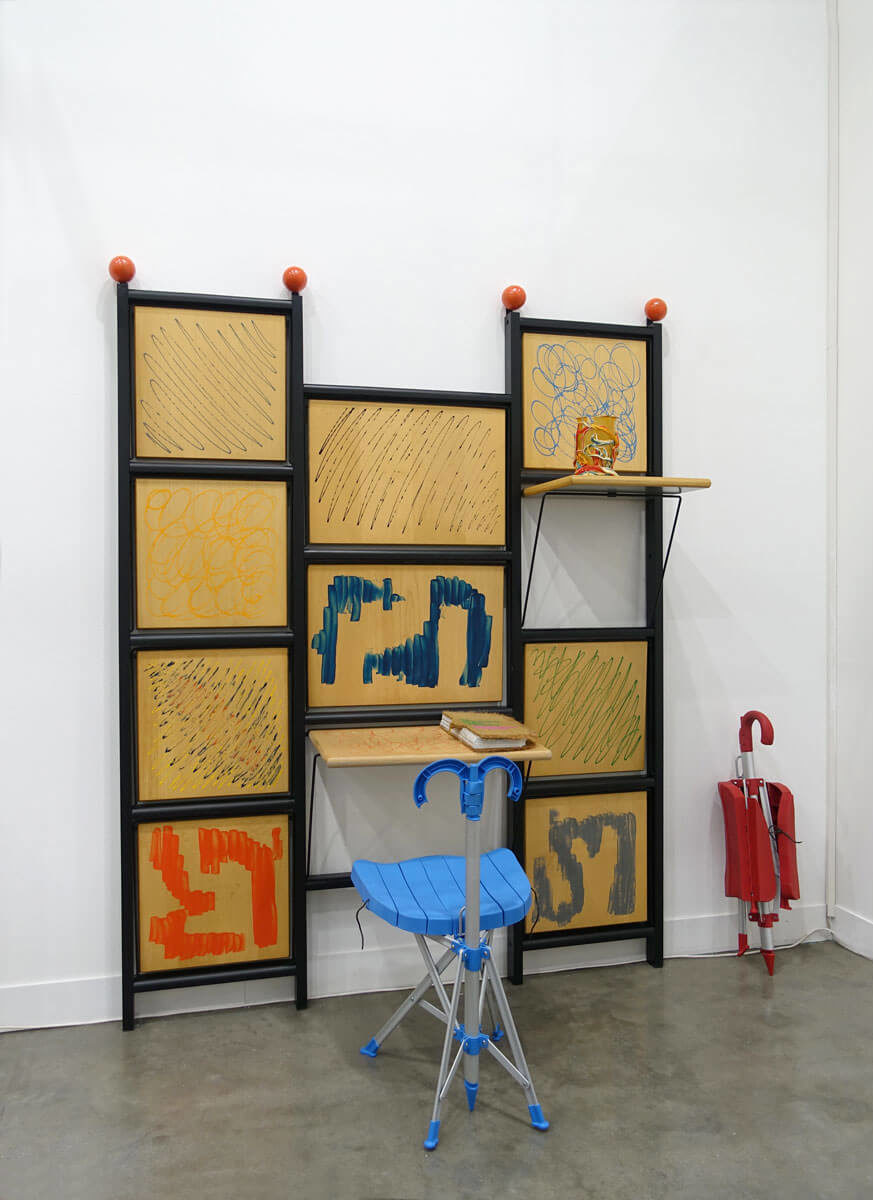
Installation view Luisa della Piane, with work by Gaetano Pesce for Bernini, 1982; and ‘Umbrella’ for Zerodisegno, 1992
COURTESY: Luisa delle Piane & miart
One of Pesce’s former collaborators, Matteo Pellegrino, showed a group of witty vases made of Caparo stone and brightly coloured silicones. According to Raffaele Marco Lotito, director of Luisa Delle Piane, these works really caught the eye of the public. “It is interesting to show in the context of an art fair,” he said, “as I have always believed in raising awareness and educating the public on the most experimental forms of design, on unique pieces, on how these pieces could create an emotion and be collected just like works of art.”
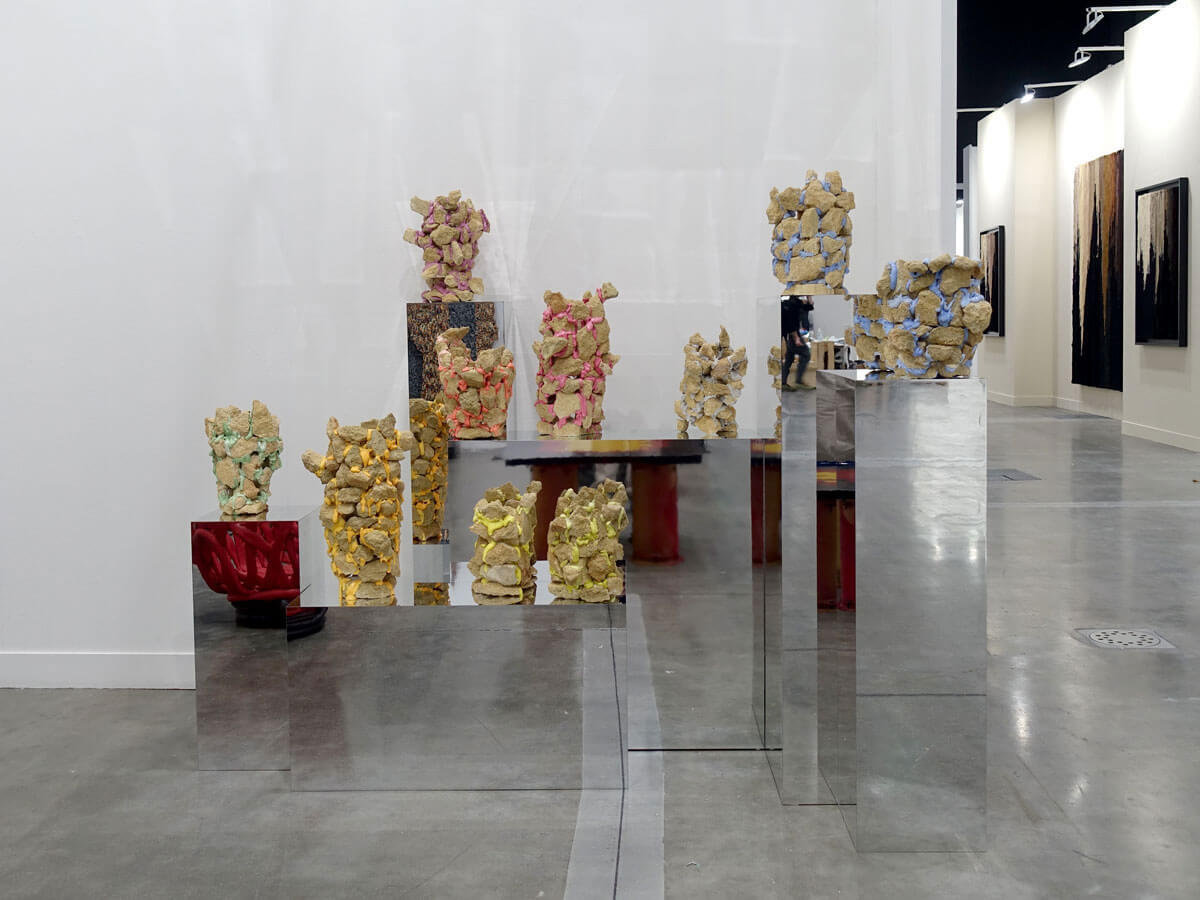
Installation view Luisa della Piane, with Matteo Pellegrino’s, ‘Souvenir’ series, 2022
COURTESY: Luisa delle Piane & miart
Nina Yashar, founder of Nilufar gallery, commented that the fair is also “an opportunity to understand where we stand by confronting historical and contemporary realities.” This year, her gallery dedicated its exhibition to Andrea Branzi in anticipation of the important year ahead for the designer who will be participating in the 24th edition of the Triennale International exhibition.
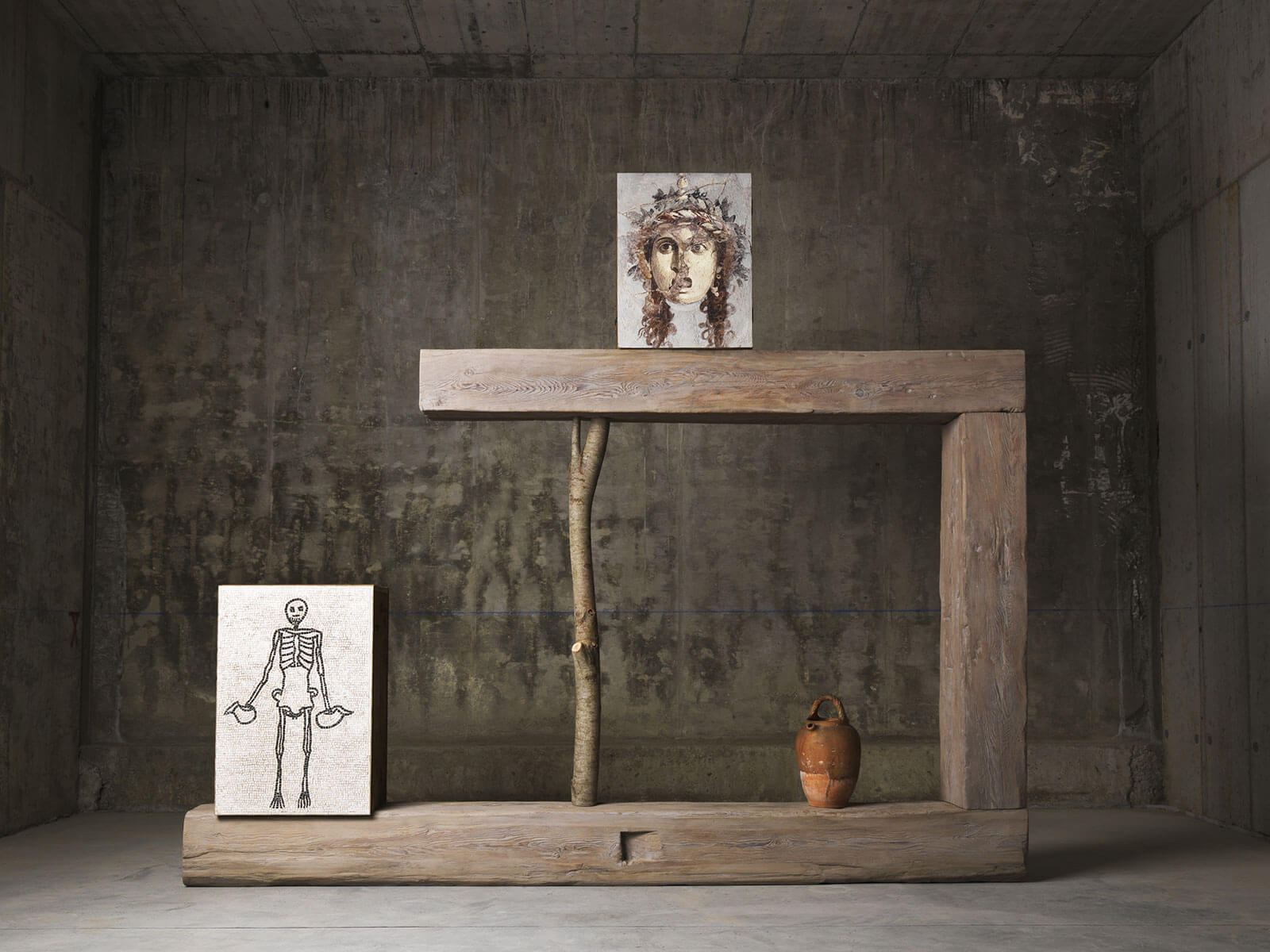
Installation view, ‘Andrea Branzi – Grandi Legni and Etchings’
COURTESY: Andrea Branzi & Nilufar / PHOTOGRAPH: Ruy Teixeira
Between the fair and their exhibition space Depot, Yashar recreated the exhibition ‘Grandi Legni’ (‘Large pieces of wood’) originally presented in 2009 at the Alaïa gallery in Paris. The ‘Grandi Legni’ are large archetypal structures that offer thoughts on time, the act of creation, progress and even the shamanic dimension of design.
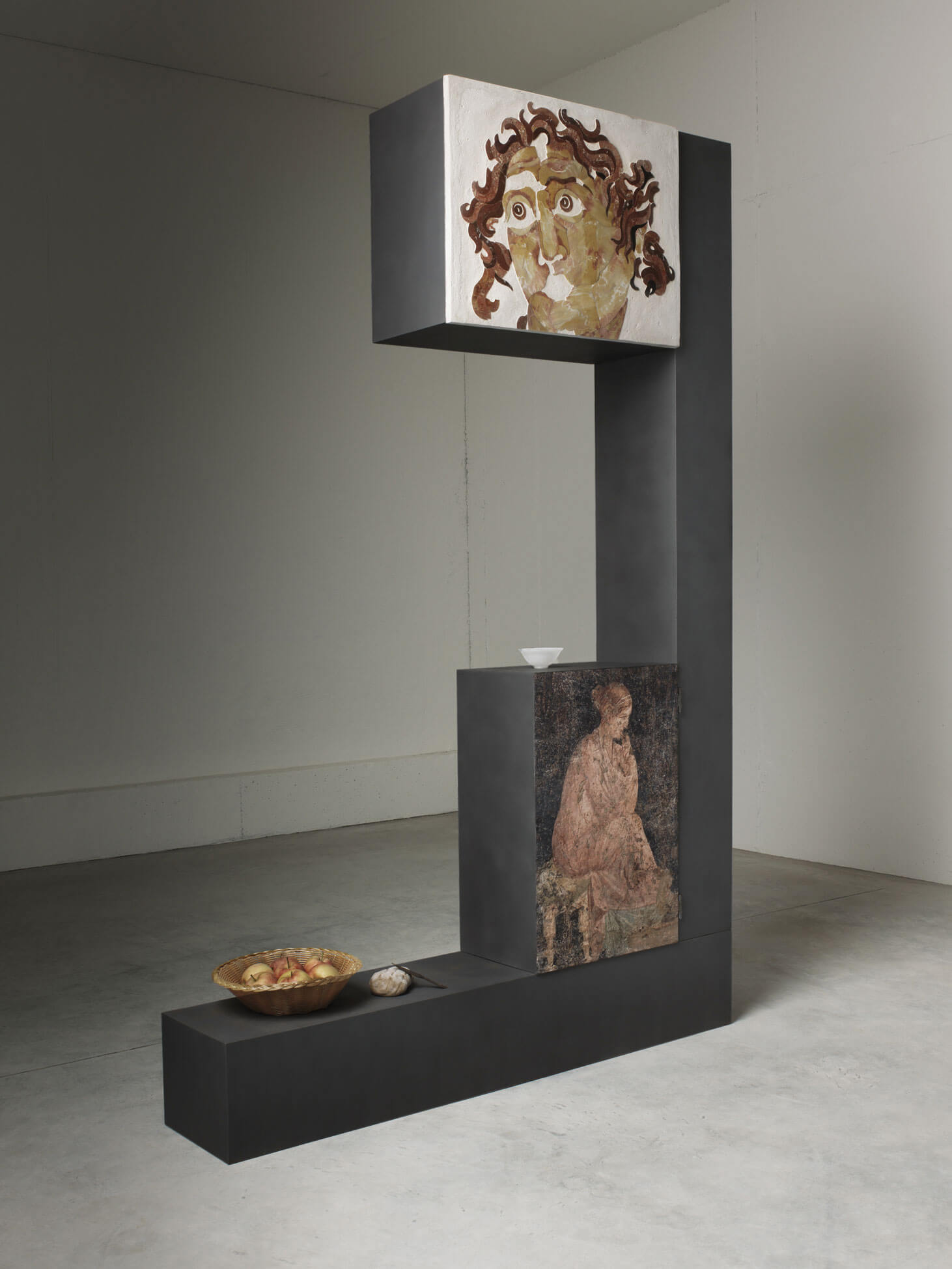
Installation view, ‘Andrea Branzi – Grandi Legni and Etchings’
COURTESY: Andrea Branzi & Nilufar / PHOTOGRAPH: Ruy Teixeira
They voluntarily avoid any formal reference to industrial techniques as Branzi considers it a “terrible inheritance” that made us obliterate previous forms of creations. The conceptual, but always slightly mischievous, Italian master defines ‘Grandi Legni’ as “autonomous presences … neither design nor architecture, but in part design and in part architecture.”
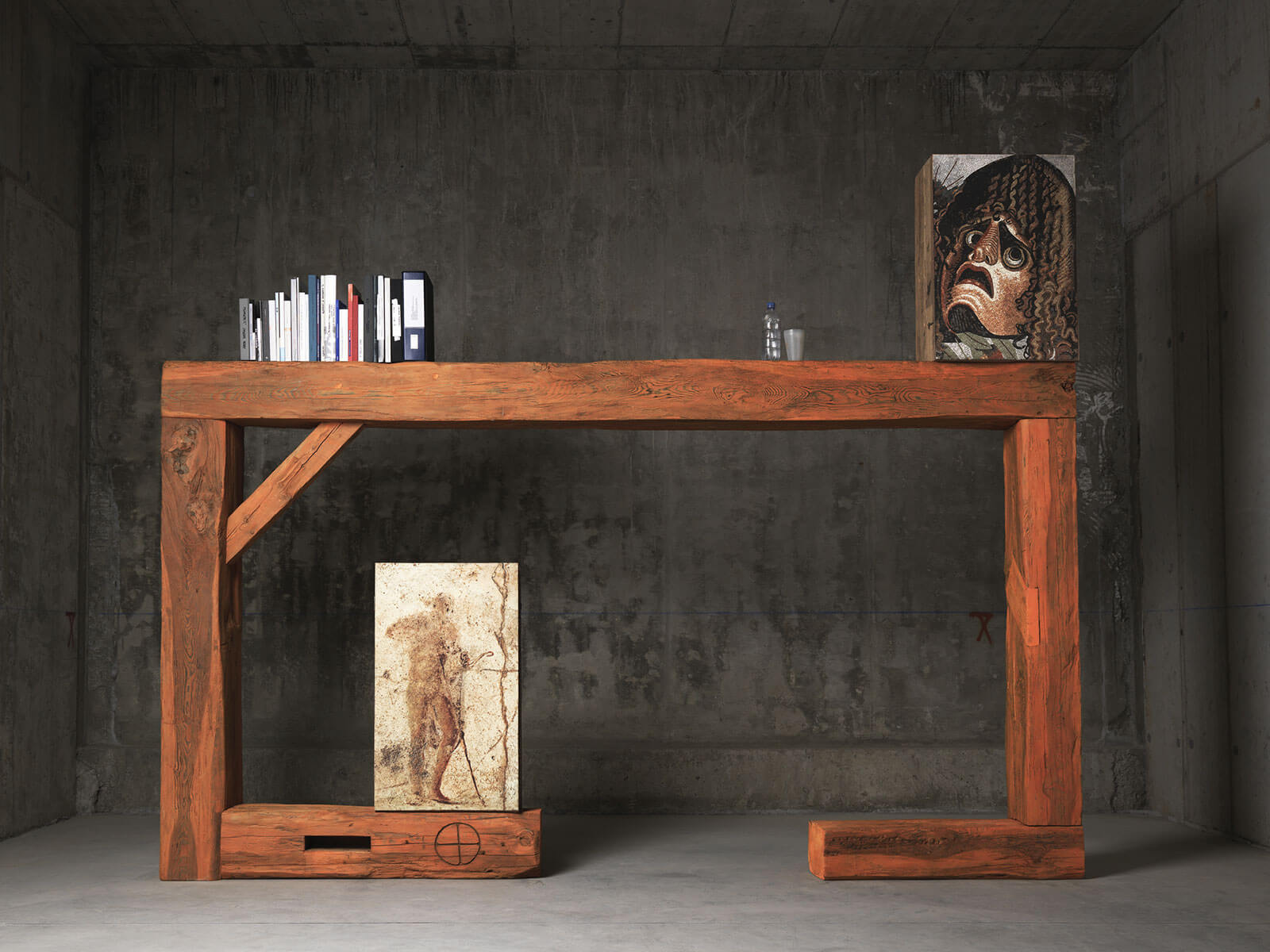
Installation view, ‘Andrea Branzi – Grandi Legni and Etchings’
COURTESY: Andrea Branzi & Nilufar / PHOTOGRAPH: Ruy Teixeira
The gallery Eredi Marelli based in Cantù, exhibited the works of Angelo Mangiarotti and the architect Ernesto N. Rogers (from the BBPR studio and former editor of Domus). The designers worked together but also shared a passion for Italian artisanal work. Eredi Marelli’s booth brought forward the important relationship between the workers and the artisans. On one corner of the stand stood a rare and splendid table by Rogers (only two examples are currently known) executed in 1955 by Piero Frigerio in Cantù and reminiscent of the Velasca Tower built the previous year.
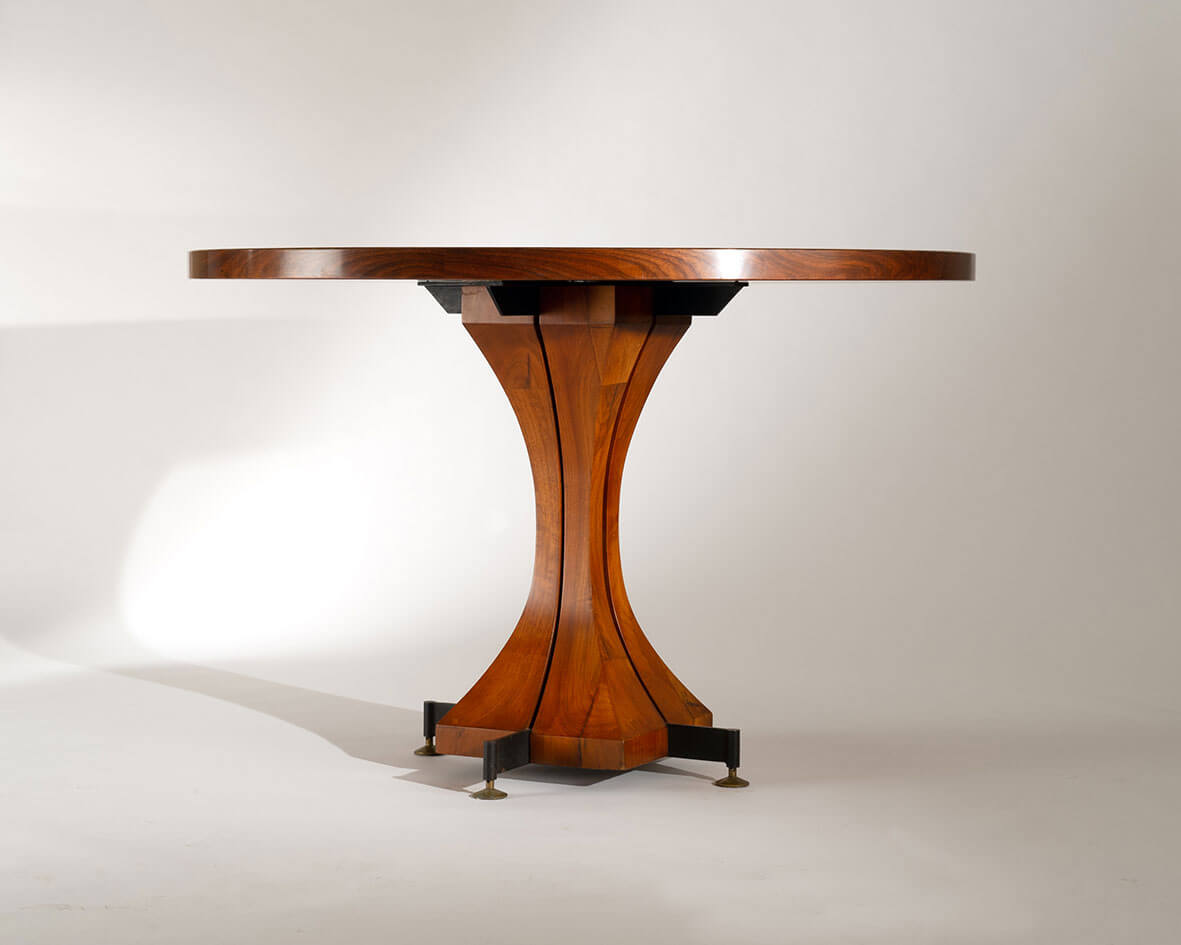
Studio BBPR (Gianluigi Banfi, Lodovico Barbiano di Belgiojoso, Enrico Peressutti, Ernesto Nathan Rogers), ‘Table with circular top’, circa 1955
COURTESY: Eredi Marelli & miart
Mangiarotti’s work was represented by two rare wooden sculptures made with Arquati, an alabaster vase made in Volterra, and rare ceramics produced by Danese Milano.
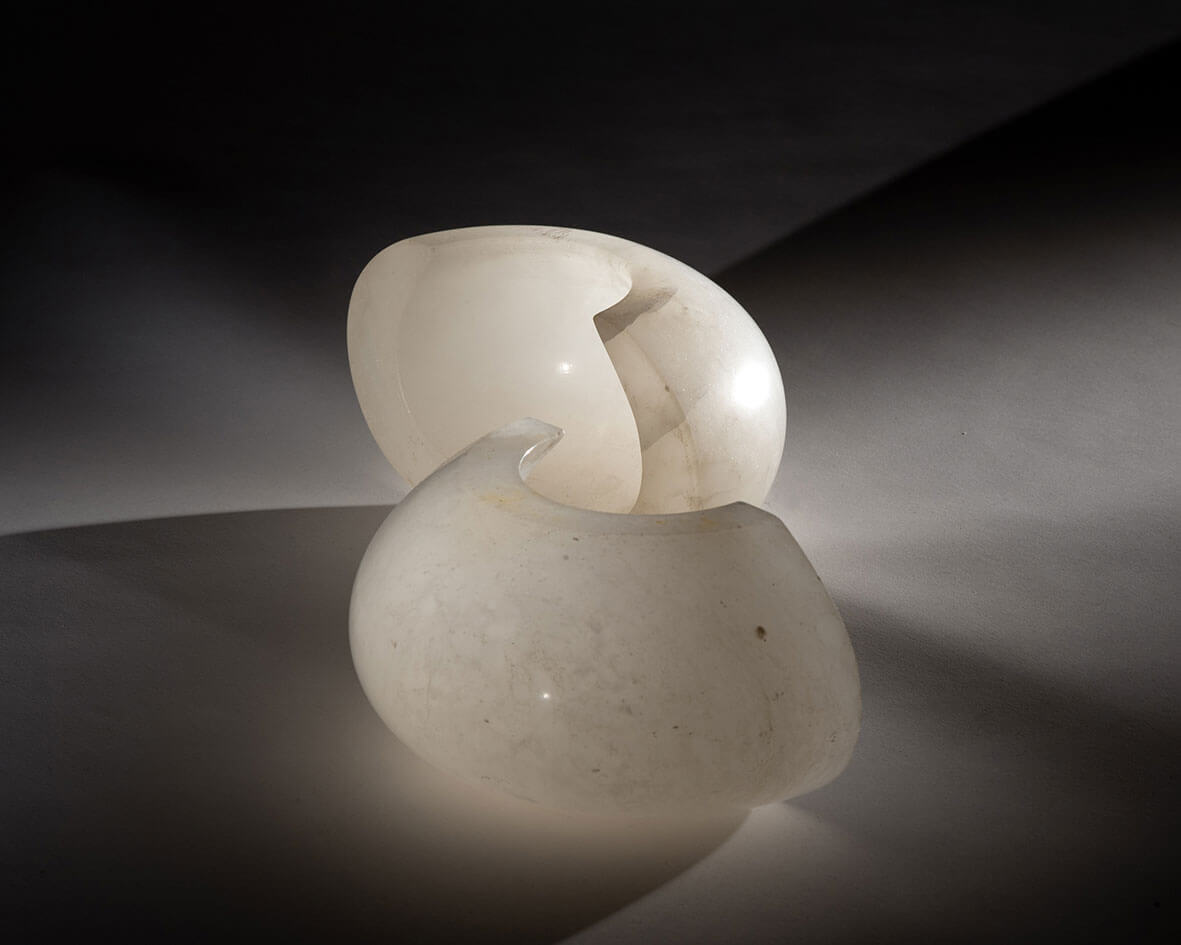
Angelo Mangiarotti, ‘Pair of large sculptures from the Axia collection’, 1982
COURTESY: Eredi Marelli & miart
Finally, CLEARING gallery displayed the inviting seats from the French duo Daniel Dewar & Grégory Gicquel together with the paintings of Californian artist Calvin Marcus (also a designer coincidently).

Daniel Dewar & Grégory Gicquel, ‘Oak bed with Apollo butterflies, field poppies and snails’, 2022
COURTESY: Daniel Dewar & Grégory Gicquel & miart / PHOTOGRAPH: © Roberto Marossi
The witty design works, with carved snails and embroidered insects, perfectly responded to the bright and lively watercolours, creating an enchanting and slightly surrealist refuge in the fair.
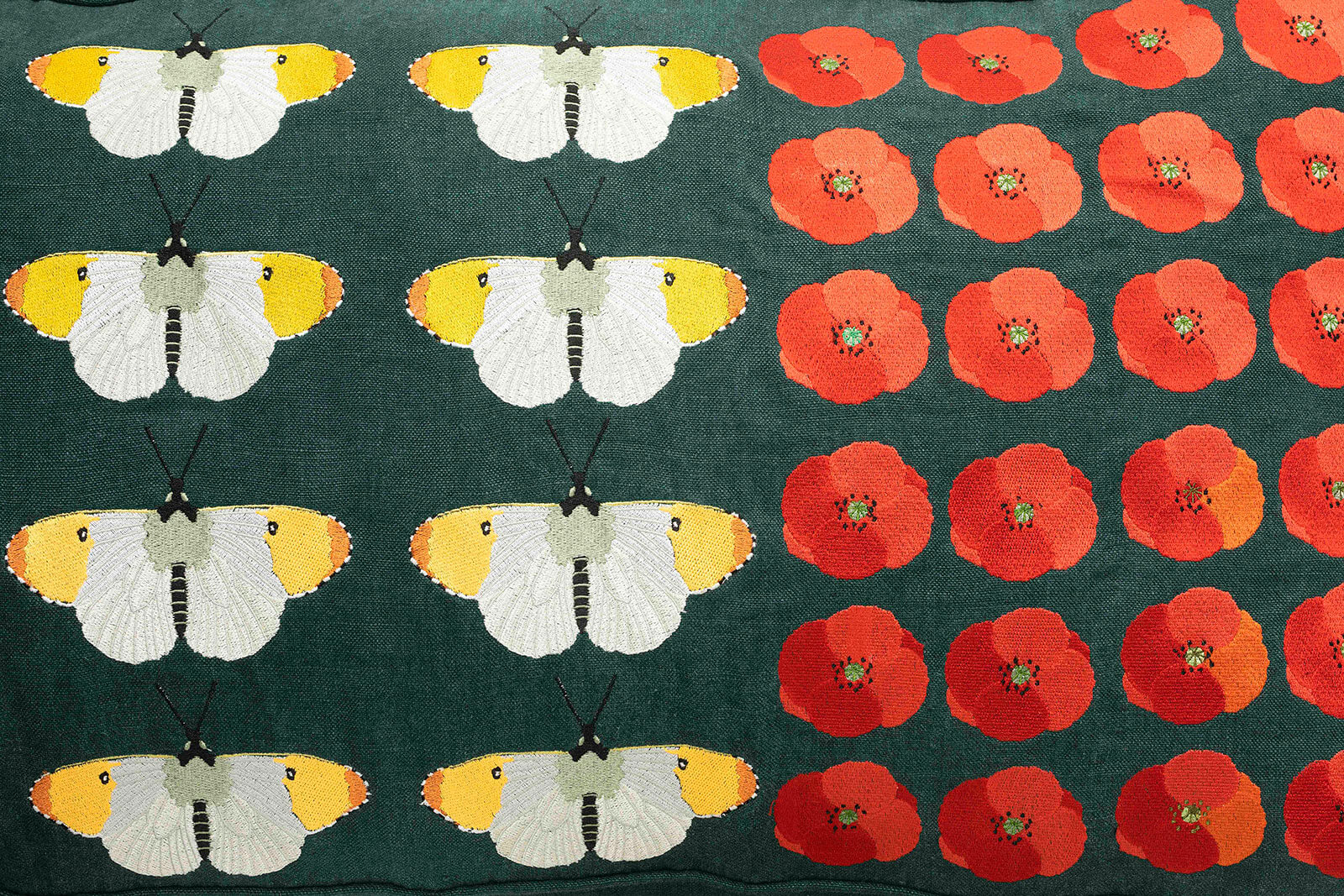
Daniel Dewar & Grégory Gicquel, ‘Oak bench with orange tip butterflies, Flanders poppies and snails’, 2022 (detail)
COURTESY: Daniel Dewar & Grégory Gicquel & miart
miart 2023 will run from 14th-16th April 2023.





